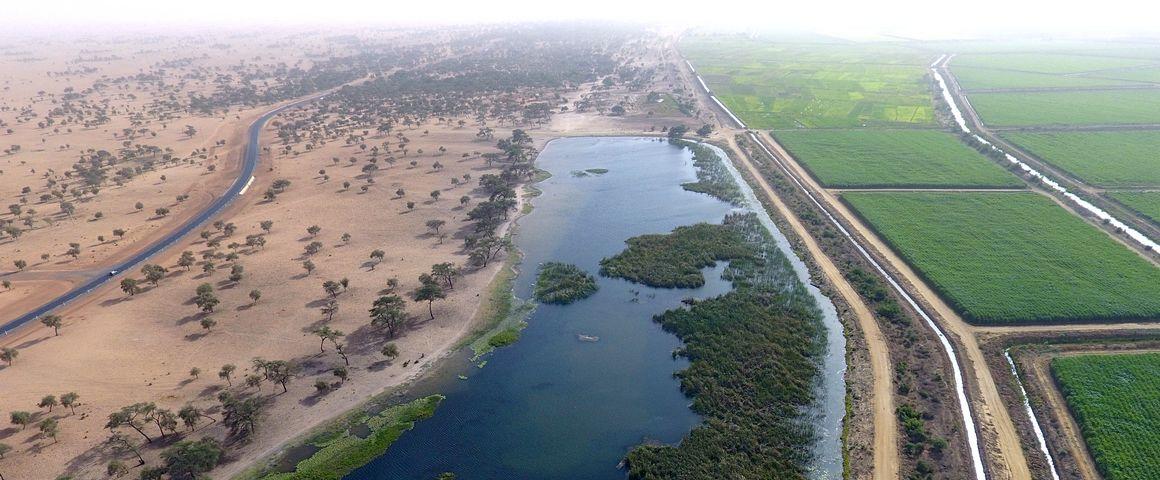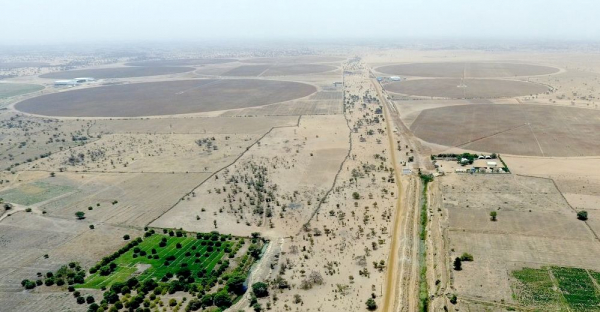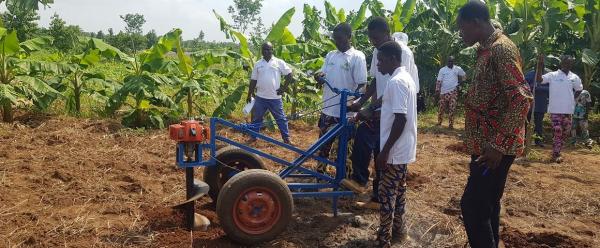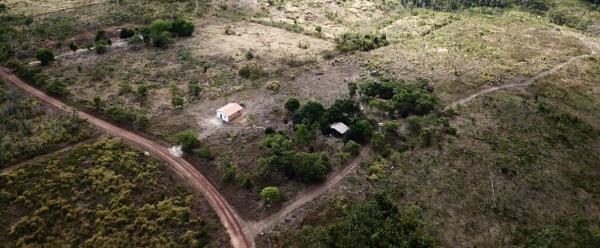Call to action 25 November 2025
- Home
- CIRAD news
- News
- environmental impact of land grabbing
Large-scale land deals for agriculture exact a high price on the planet

A French sugarcane investment of more than 12,000 hectares in the Senegal River valley © J. Bourgoin, CIRAD
As the socioeconomic benefits of large-scale land acquisitions (LSLAs) in low-income countries are increasingly being called into question, a growing body of evidence points to a host of environmental repercussions for transnational land deals, with potentially devastating knock-on effects on ecosystems and biodiversity.
A 2021 report by the Land Matrix Initiative (LMI) reveals – based on data from 964 land deals in tropical regions with a total area of 19 million ha – that approximately 9.4 million ha were still forested in 2000, but that this area had declined by 20.2% by 2019.
The LMI, an international initiative set up to monitor land acquisitions, of which CIRAD is a member, recorded 1865 transnational agricultural deals between 2000 and 2020. The trend for LSLAs in developing countries has its origins in the sharp upturn in agricultural commodity prices seen in the late 2000s, with a substantial number of deals linked to global businesses. Despite a slowdown in acquisitions over the past decade, the LMI warns of a possible new surge, driven by a post Covid-19 rise in prices of agricultural commodities and timber, exacerbated by the war in Ukraine.
LSLAs are associated with biodiversity loss and carbon emissions...
“LSLAs are a core driver of land-use change, contributing substantially to deforestation, habitat destruction and land degradation,” says Jérémy Bourgoin, a researcher at CIRAD. “Consequently, they are associated with massive losses of biodiversity and high carbon emissions, particularly when tropical rainforests are affected.”
Another recent study investigating the effects of LSLAs in three African countries showed that land acquisitions led to shifts in small-scale farmers’ agricultural land management in Kenya due to water shortages and pollution, reduced access for herders to grazing land in Madagascar, and increased deforestation in Mozambique.
Land investments for commercial agriculture often result in the conversion of cropland, pasture and forest to large-scale monocultures for mechanized production, supported by the construction of dams, greenhouses, buildings and irrigation systems.
A direct causal relationship has been identified between land use conversion and biodiversity loss – with the majority of land deals in tropical areas, where endemic diversity is higher. To date, 87% of LSLAs have been in regions of medium-to-high terrestrial biodiversity. Deforestation contributes to climate change, while indirect impacts include further deforestation caused by displaced farmers.
and have far-reaching effects on water supplies...
Evidence shows that land acquired for large-scale agriculture is predominantly used for water-intensive crops, such as oil palm, sugar cane, cotton and rubber, with 54% of all deals recorded in the Land Matrix database falling into this category. In tropical rainforest areas, the implications of LSLAs can be far reaching, through disruption to the hydrological cycle, and in all locations intensive production often goes hand in hand with increased use of fertilizer and pesticides, with run-off into the surrounding water bodies and environment.
Two examples highlight the risks. In Sierra Leone, large irrigation structures have been installed for intensive sugar cane production, resulting in the drying up of nearby swamps used for local rice production. In Egypt’s Western Desert, an investment by several Gulf companies to grow alfalfa has diverted water from the Nile, reducing supplies to produce rice, wheat and fruits.
but bring little in the way of benefits
The LMI report, supported by evidence from other quarters, suggests that the move towards large-scale land transfers produces relatively few socioeconomic benefits, in the form of employment and infrastructure. And although some LSLAs have made an effort to avoid negative impacts, experts say there is a compelling need for more research into models that can protect the interests of those most affected, and ensure that the broader picture is taken into account in assessing the consequences for the environment.
“This report clearly shows the urgent need to rethink LSLAs,” said Ward Anseeuw, a CIRAD researcher and co-author of the LMI report. “There is a need to turn the current practices of large-scale agricultural investments into responsible and sustainable contributions to economic and social development that respect human rights and the environment.”
The LMI is calling for international investment treaties to integrate human rights and environmental provisions, including the introduction of mandatory sustainability due diligence legislation, and an end to LSLAs that lead to deforestation or the conversion of other valuable natural habitats, or that damage important carbon stores such as peatlands.
It is also urging more effective environmental governance of LSLAs and greater transparency of land deals, supported by effective monitoring. A new study on land deals in Africa, published by LMI in May 2022, reveals that 78% of 540 land acquisitions assessed do not comply with international land tenure policy guidelines, showing scant respect for environmental safeguards.





























